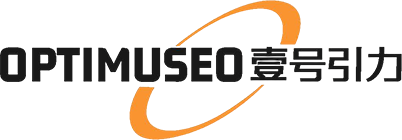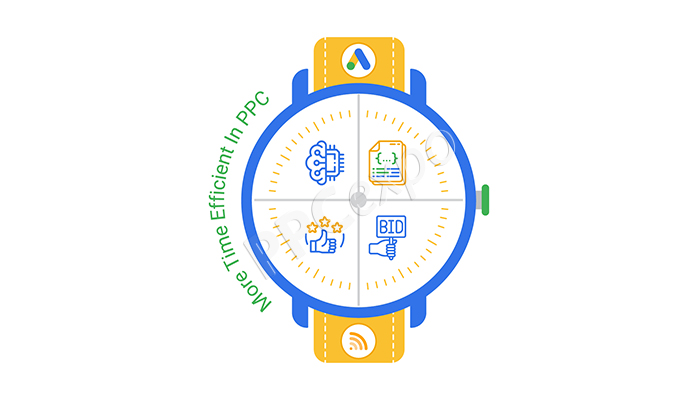
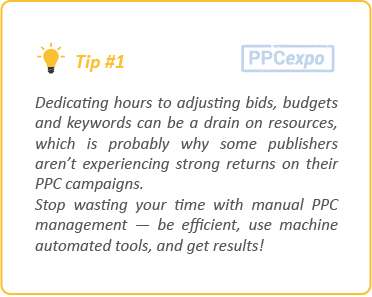
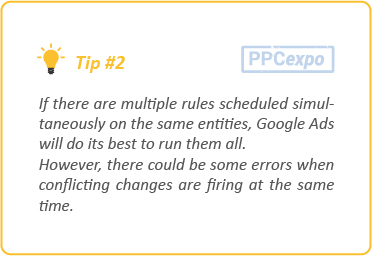
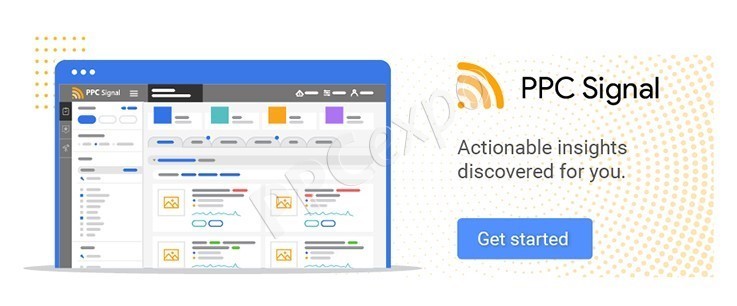
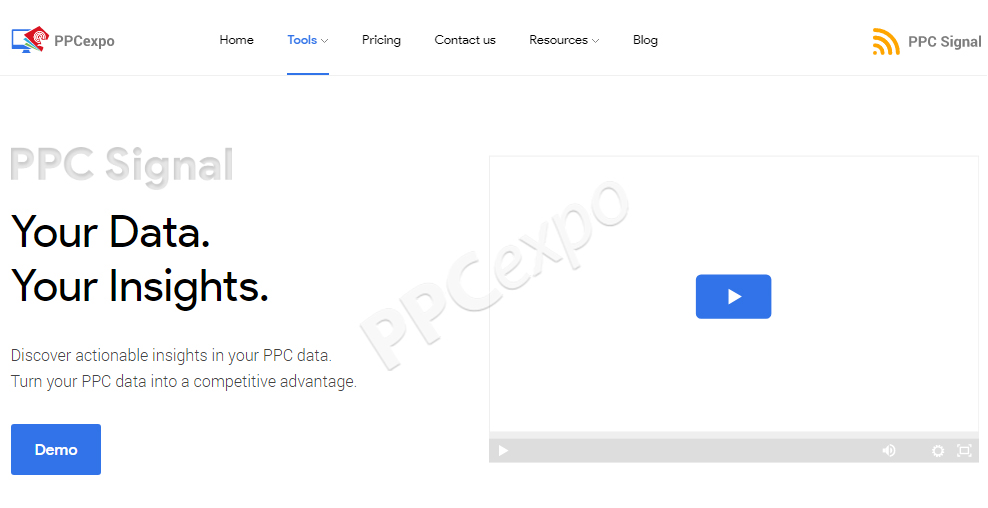
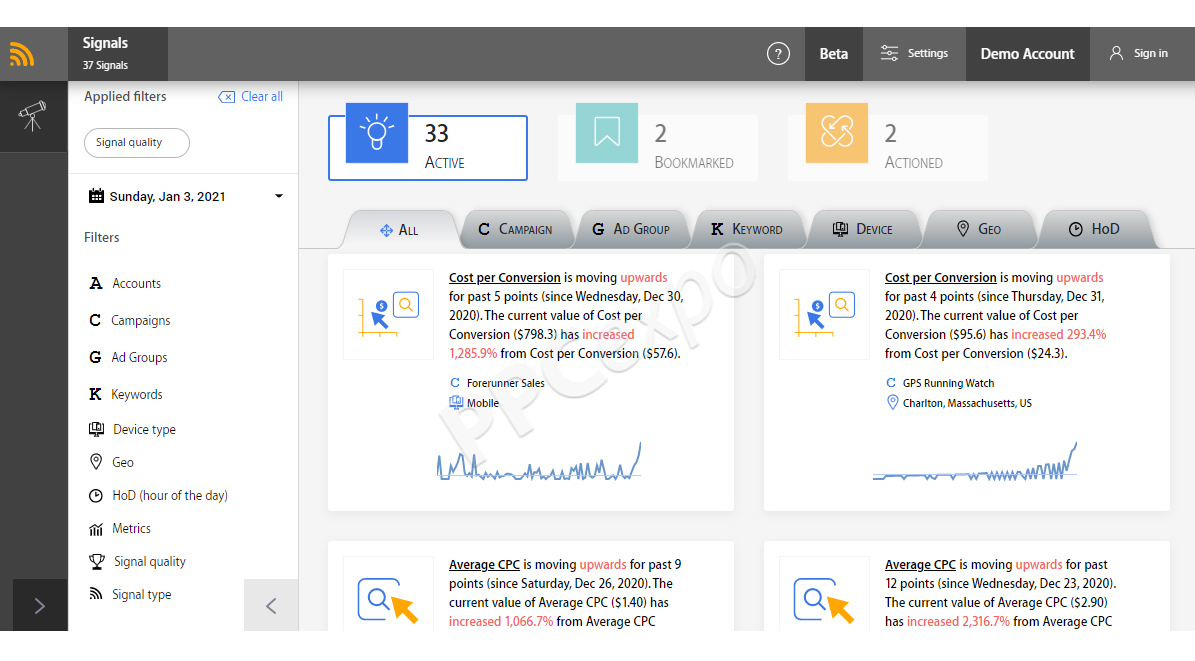
使用自动化提高谷歌广告活动管理的效率
这篇文章可以从数以千计的关于时间重要性的引文之一开始。但是,您已经知道它是一种极其宝贵且有限的资源。所以,让我们不要再浪费它了,直奔主题。

按点击付费营销是一种非常强大的策略,它为各种规模和受众的企业提供了一条通往感兴趣客户的直接途径。但是,管理广告系列并对其进行优化以取得成功可能需要大量时间,尤其是在您自己工作的情况下。
您可以轻松地发现自己每天花费几个小时来调整出价、跟踪关键字和分析性能。而且,如果您没有在正确的地方寻找,那么您可能甚至没有多少时间和精力可以展示。
然而,在某些情况下,一个小团队甚至一个 PPC 经理比大型机构更有效地提高了活动绩效。这怎么可能,或者这只是运气和巧合?这不是运气或不稳定的增长黑客;这是自动化 PPC 工具的结果,该工具利用机器学习来优化您的时间、预算和绩效,从而提高盈利能力。
本次讨论将探讨如何使用自动化使 PPC 变得简单和省时。

Google Ads 如何帮助您节省时间?
谷歌明白,并不是每个人都得到一个广告客户团队的支持,他们每天可以投入数小时来管理他们的广告系列。
In fact, a large percentage of Google Ads users spend less than an hour a week working on their PPC marketing because these individuals are busy running their entire business alone. They just don’t have the time to spend on making micro-decisions to boost PPC campaign performance.
Unfortunately, Google Ads is really not a strategy that you can set and forget. It requires attention and time. Thus, Google Ads offers users a number of automation tools and features to help them save time and still achieve good results.
Here are some of the automated utilities that Google Ads provides:
Setting Automated Rules
Automated rules are one of the first of these types of features that Google Ads added. It’s a great way to make automatic changes to your account when certain events occur. Essentially, automated rules are conditional statements, also known as if/then statements. If X conditions are met, then Y outcome occurs.
You can use these statements to make certain rules and alerts in your account. Here are some of the common ways that automated rules are used:
- Keyword bid adjustments: For instance, if your impression share falls to a certain level, then bids for the affected ad group or keywords are increased.
- Scheduling temporary campaign pauses: When key performance metrics fall to poor or below-average levels, you can be alerted. Then, you can act quickly and pause these campaigns temporarily while you investigate the problem further.
- Pausing keywords with low performance: You can create a similar alert system as the one above, but at the keyword level.
- Increase CPC bids: With this rule, CPC bids can be increased when certain conditions are met.
- Alerts about performance shifts: Anytime a big swing in performance occurs, you can be notified. Again, this gives you the opportunity to investigate in a timely manner.
There are some drawbacks to automated rules. While they seem easy in theory, you may have to create several conditions in one rule to achieve a very simple effect. If you aren’t careful with this, you may have rules creating undesired consequences. Unraveling where things went wrong in your automated rules can eat up a lot of time.
Another drawback is that while the alerts are automated, the actions often are not. You need to manually intervene and make the necessary alterations to respond. Again, this takes time, especially if you have a large PPC account and there are several adjustments that need to be made.

Writing Scripts
Scripts attempt to resolve many of the shortcomings of automated rules. These are more advanced operations that you can use to teach Google Ads how to execute certain processes automatically.
There are several applications for scripts:
- Dayparting adjustments
- Keyword level bids
- Campaign budget management
- Search query mapping
- A/B testing
- Audience targeting and management etc.
There is a lot more customization and freedom when writing scripts compared to automated rules. However, it does have a significant learning curve. You need someone that has extensive knowledge of java script writing, as well as an intimate knowledge of Google Ads, Google APIs and how to extract data programmatically.
That’s not an easy person to find.
It can be difficult to find someone with PPC marketing expertise and these advanced coding skills, which means you may have to hire someone to handle this responsibility. Or, you can learn it yourself, which is a significant investment of time.
Automated Bidding Strategies
Adjusting bids is one of the most common and routine changes in Google Ads campaign management. You’ll frequently find yourself needing to increase or decrease bids to try and maximize your ROI.
That’s because performance changes. So, your star keywords from yesterday may be wasting your ad budget today and may continue to do so tomorrow. In a way, managing bids is a game of cat and mouse. You’re constantly chasing the opportunities while trying to avoid the areas that hurt your ROI.
Luckily, bids are easy to automate with Google Ads. There are several automated bidding strategies that Google offers. These strategies make automatic changes to bids based on the latest changes to your campaigns and the goals you’ve declared. There are bidding strategies that automate none, some or all of these routine adjustments.
The biggest drawback of automated bidding strategies is costs. Many advertisers find that when they rely on automated bidding, the system works too efficiently and spends the bulk of their budget in a short amount of time. This leaves no ad budget for the remainder of the month.
Google Recommendations
This is the newest automation feature to hit the Google Ads platform. Google Recommendations are customized suggestions on how you can increase performance. It is a fast and efficient method to find new ways to make improvements to your campaigns.
These suggestions will introduce you to new features on the Google Ads platform, help you stretch your budget, improve bids, keyword targeting and more. And, all of the suggestions are based on your own campaigns and how they have performed in the past. These are not general tips that anyone can use; they are specific actions regarding your individual account.
Unfortunately, Google Recommendations tend to run into the same issues as some automated bidding strategies. Many of the changes that are suggested involve increasing max CPC bids, which is a fast way to drain your budget. It may be unwise to blindly trust these recommendations.
All of these automated Google Ads features can save your time, while still offering a somewhat optimized PPC strategy. However, each feature has at least one drawback that can make you think twice before using these options.
The good news is that there are tools designed specifically to make Google Ads campaign management more time-efficient and effective, without having to deal with any red flags. PPC Signal is such a tool. Not only does it optimize your campaigns to achieve greater success in your PPC endeavors, but it also optimizes your time!

You can access PPC Signal from here.
How PPC Signal Saves The Time Of An Advertiser
PPC Signal is an easy-to-use tool that empowers your Google Ads campaign management process. It’s built on simple principles that make PPC management effortless, efficient and even exciting.
There are three core principles behind PPC Signal that help save your time, while optimizing your performance for peak ROI.
Insight-Driven, Not Data-Driven
In years past, companies strived to be data-driven. This meant listening to the current data and reacting to what was happening in that moment. Data-driven changes are very basic and involve only one dimension of change. For instance, X metric is increasing, therefore, I must do Y.
If this sounds like a conditional statement Google’s automated rules, you’d be correct. Many of Google’s automated features are data-driven. It’s not bad, but it has drawbacks and most data-driven conclusions are only relevant in the short-term.
The best approach to Google Ads campaign management is to become insight-driven. Insights come from complex combinations of different metrics. These combinations showcase the big picture, whereas basic, data-driven ones only show a blurry piece of the puzzle.
That said, complex combinations are not easy to navigate. If you were to manually identify and analyze every angle and combination to determine the best outcome, it would take a substantial amount of time. This expenditure of time would eventually outweigh the value of the insight itself.
The irony is that these insights are exactly the campaign details that you need to become more efficient in your PPC management. That’s where PPC Signal enters the equations. Not only does this tool monitor your campaign data and look at changes in data, but it measures that data from all angles.
In other words, it goes the extra step that many other Google Ads campaign management solutions fail to take by analyzing each change and only returning the ones with significant value. This saves you a tremendous amount of time and effort, while also giving you all of the insights that you need to improve your account on a daily basis.
The 80-20 Rule
Between all of the data being constantly created and the never-ending stream of changes happening all of the time in your campaigns, it’s easy to feel lost and even paralyzed. There’s so much going on that it is often difficult to know where to start in PPC management.
This is not the case with PPC Signal. Essentially, you have an automatically discovered and maintained list of signals that you can pursue to better your performance. It even prioritizes signals based on the most significant anomalies, outliers, trends and shifts that it detects. So, you always know where to start.
This prioritization follows what’s known as the Pareto Principle, or 80-20 rule. This is a distribution model first suggested by Italian economist Wilfredo Pareto to explain wealth and land ownership disparity in Italy. However, it’s been used in many different applications since.
In its simplest form, the 80-20 rule says that approximately 80% of your output will be created by only 20% of your input. In PPC, you could say that 80% of your gains are produced by only 20% of your keywords or ad groups. This 20% is known as the vital few, while the remaining 80% of inputs are known as the useful many.
How does this apply to PPC Signal? When prioritizing alerts, PPC Signal presents changes with the biggest significance and potential impact —the vital few. Once you resolve these high-priority signals, then you can tackle the useful many. After all, these tasks are still responsible for around 20% of your performance!
If you want to focus on a specific area of your Google Ads account, or a single campaign goal, you can also filter the signal results. This further improves your ability to zero in on the most significant changes, without having to spend hours analyzing the data for yourself.
Continuous 1% Improvement Strategy
Thanks to PPC Signal’s machine learning and AI engine doing the heavy lifting, you can dedicate 100% of your time to improving performance and optimizing your PPC strategies. You don’t have to burn time and other valuable and limited resources getting to this stage in the process.
In a way, PPC Signal gets you down the field and then passes you the ball. All you need to do is punch it in across the goal line. PPC Signal finds gaps in the defense, seizes opportunities to get down field and removes all the other troublesome obstacles, leaving you with the glory of scoring the goal.
With all of this burden and tedium removed, Google Ads campaign management becomes a very simple process. All it takes is just making a 1% improvement each day. Obtaining this small increase takes almost no time at all thanks to the PPC Signal.
Just resolve a few alerts each day, and you’ll achieve that 1% growth in no time. In order to reach that goal, you can choose to resolve several basic signals or just a couple of more complex ones. Sometimes, you may only need to make one significant change to make that small step forward.
Why only 1%? While such a small change seems insignificant on its own, the 1% improvements you make will begin to grow exponentially. PPC marketers sometimes fall into believing that optimization needs to happen all at once. In reality, it is a continuous process that needs to happen regularly because your campaigns are changing constantly.
It can be difficult to envision what exponential growth looks like. When you think of improving by 1% each day, your brain wants to think incrementally. Day 1 you have 1% change; on day 2, you reach 2%…3%, 4% and so on. On day 100, you have a 100% increase.
That’s not how growth happens. There is a multiplying effect. The math is not 1%+1%+1%, over and over for the given number of days. It is 1.01^x, where ^ is an exponential and x is how many days you’re tracking progress. So, if you committed to this 1% daily change for an entire year, your end-of-year growth would not be 365%, but a tremendous 3,778%!
The longer you can stack these 1% improvements, the stronger your accumulative advantage becomes. This advantage can’t be overcome by competitors with more money because it requires time to establish growth.
While it is possible to achieve more than 1% daily improvement, PPC Signal suggests this amount because it is very easy to obtain each day. That also means it is incredibly time efficient. You can make your 1% increase and then move on to other tasks that require your attention.
What Does PPC Signal Offer An Advertiser?
Adapt To Changes Faster
Again, PPC is an always-changing environment. Adapting to these changes is a persistent challenge that requires a lot of time to manage manually. With PPC Signal auto-detecting insightful changes in your campaigns, you can minimize the time and effort required, while maximizing your results and growth!
Receive Recommended Actions
PPC Signal is not the only Google Ads campaign management tool that detects changes. However, it is rare to find a tool that doesn’t just identify changes, but also recommends how to resolve each alert. When you click on any signal in the dashboard, PPC Signal offers a recommended action on how to best proceed.
Focus On What Matters
A large Google Ads account creates mountains of data at all hours of the day. It’s enough to make your head spin and lose sight of what actually matters. This is why manual Google Ads campaign management just isn’t possible when you’re working with large, complex accounts. There is just too much data to deal with, even if you’re a wizard at PPC marketing.
By auto-detecting insights and prioritizing the list of signals based on the 80-20 rule, PPC Signal does an excellent job at filtering out all of the excess noise and data, thereby only presenting the valuable, actionable insights that you need to succeed.
Getting Started With PPC Signal
You can access PPC Signal by clicking or tapping here for the Google Ads campaign management tool. After accessing the hyperlink, you’ll be brought to the following page:

Click on the “Demo” button to get a free, firsthand look at how the tool works. After clicking the blue “Demo” button, you’ll be brought to the PPC Signal main dashboard. All of the data and insights you see are pulled from a mock Google Ads account.

As you explore these different sample signals and the various features of the PPC Signal system, pay attention to how easy it is to discover noteworthy changes and receive recommended actions on how to solve these alerts. Even when the signal is
